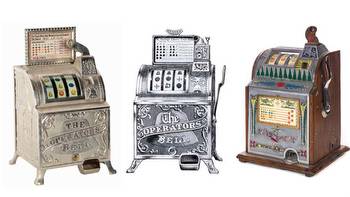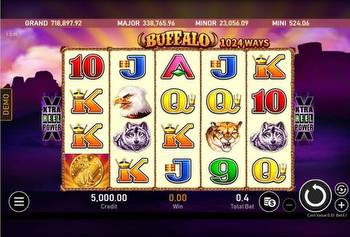The Evolution of Slot Games: From Mechanical Reels to Virtual Realities
The story of slot games begins in the late 19th century with the invention of the first mechanical slot machine. Charles Fey, a mechanic from San Francisco, introduced the Liberty Bell, a three-reel machine with five symbols and a lever for players to pull. This invention marked the dawn of a new era in gambling entertainment.
Mechanical slot machines dominated the casino floors for decades, evolving from the Liberty Bell to more complex machines with multiple paylines and new symbols. The clinking of coins and the satisfying pull of the lever created a unique and iconic gambling experience.
However, the mechanical nature of these early machines had its limitations. Payouts were limited by the physical reels and the number of symbols, making it challenging to offer large jackpots or a variety of gameplay features.
The advent of digital technology in the mid-20th century marked a significant turning point in the world of slot games. Slot game providers started developing electronic slot machines that used random number generators (RNGs) to determine outcomes. This innovation allowed for greater flexibility in game design and paved the way for larger jackpots.
One of the first major milestones in this digital revolution was the introduction of video slots in the 1970s. These machines replaced physical reels with video screens, offering more diverse themes and bonus features. Video slots quickly gained popularity among players and became a staple in casinos worldwide.
The role of slot game providers became increasingly important during this period. These companies were responsible for creating the games that casinos offered to their players. As competition grew, providers began to focus on innovation and creativity to stand out in a crowded market.
International Game Technology (IGT) was one of the pioneers in the slot game provider industry. They introduced the first progressive jackpot slot, Megabucks, in the late 1980s. This game featured a networked jackpot that could grow to enormous sums, captivating players and driving traffic to casinos.
The internet brought another major shift to the world of slot games. With the rise of online casinos in the late 1990s and early 2000s, players could now access their favorite slot games from the comfort of their homes. This accessibility opened up a whole new world of possibilities for both players and slot game providers.
Online slot games introduced features that were impossible with physical machines, such as animated graphics, interactive bonus rounds, and a wider range of themes. The convenience of playing on computers and later on mobile devices made online slots immensely popular.
Slot game providers adapted to this digital landscape by developing games optimized for online play. They also began to explore new technologies like HTML5 and Flash to ensure compatibility with various devices and platforms.
In recent years, the iGaming industry has seen the emergence of innovative slots provider like Evoplay. These companies have pushed the boundaries of what’s possible in slot game design, introducing 3D graphics, cinematic animations, and even virtual reality (VR) experiences.
Virtual reality is the latest frontier in the evolution of slot games. While not yet mainstream, VR slot games offer an entirely immersive experience that takes players to a virtual casino environment. This technology allows players to walk around slot machine banks, interact with other virtual players, and even pull the lever or press the buttons in a lifelike manner.
VR slot games have the potential to revolutionize the industry by providing an unparalleled level of engagement and realism. However, the adoption of VR technology is still in its early stages, primarily due to the cost and hardware requirements.
The evolution of slot games from mechanical reels to virtual realities is a testament to the iGaming industry’s adaptability and innovation. Slot game providers have played a pivotal role in this journey, continuously pushing the boundaries of what’s possible in game design and technology.
As an expert in the field, I believe that the future of slot games holds even more exciting developments. Virtual reality, in particular, has the potential to redefine the way players experience and enjoy slot games. As the technology becomes more accessible, we can expect to see a surge in VR slot game offerings, creating a new era of immersive gambling entertainment.
In conclusion, the evolution of slot games is a captivating journey that reflects the ever-changing landscape of the iGaming industry. Slot game providers will continue to drive innovation and deliver thrilling experiences to players worldwide, ensuring that this beloved form of entertainment remains at the forefront of the gambling world.































